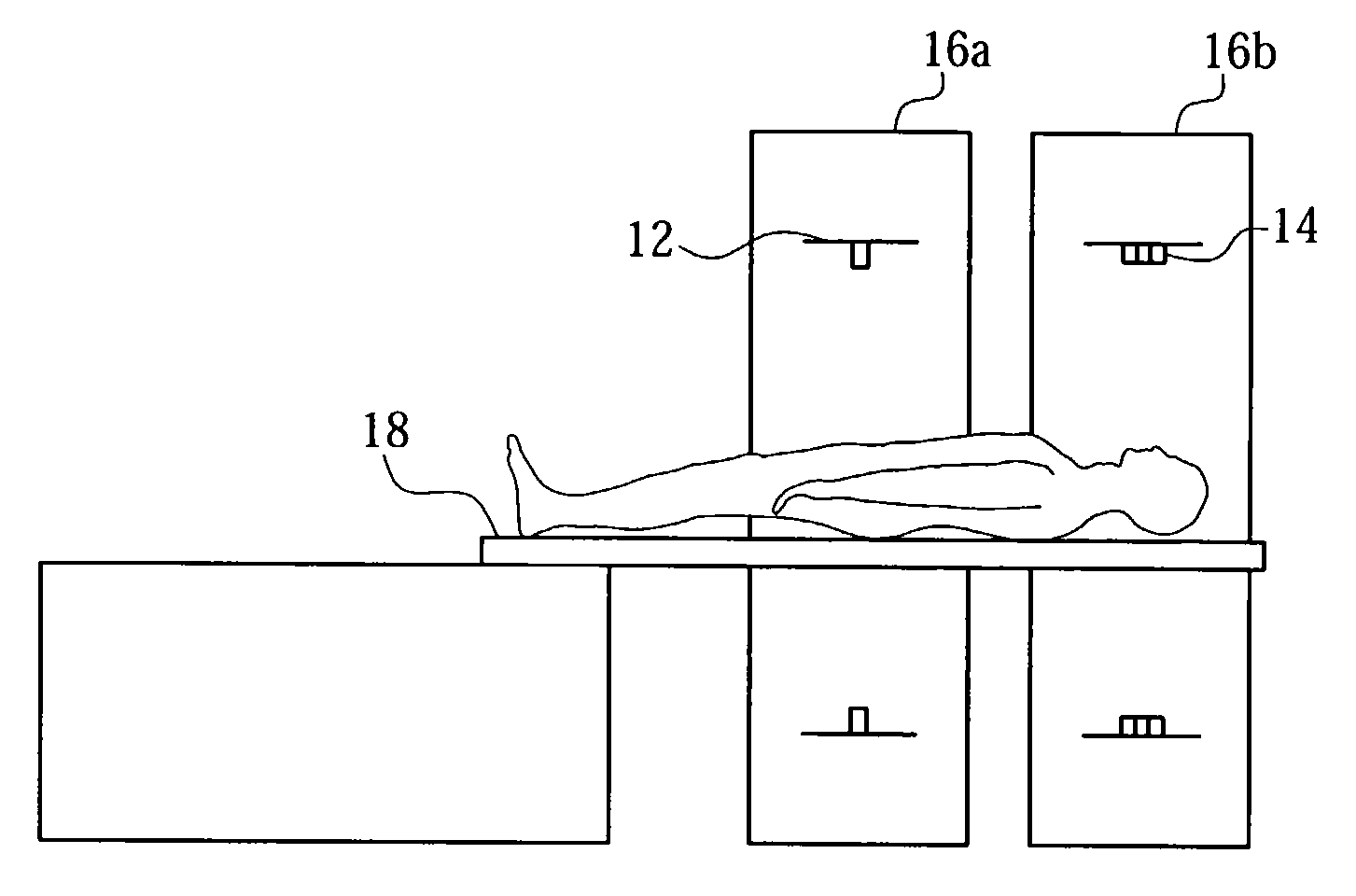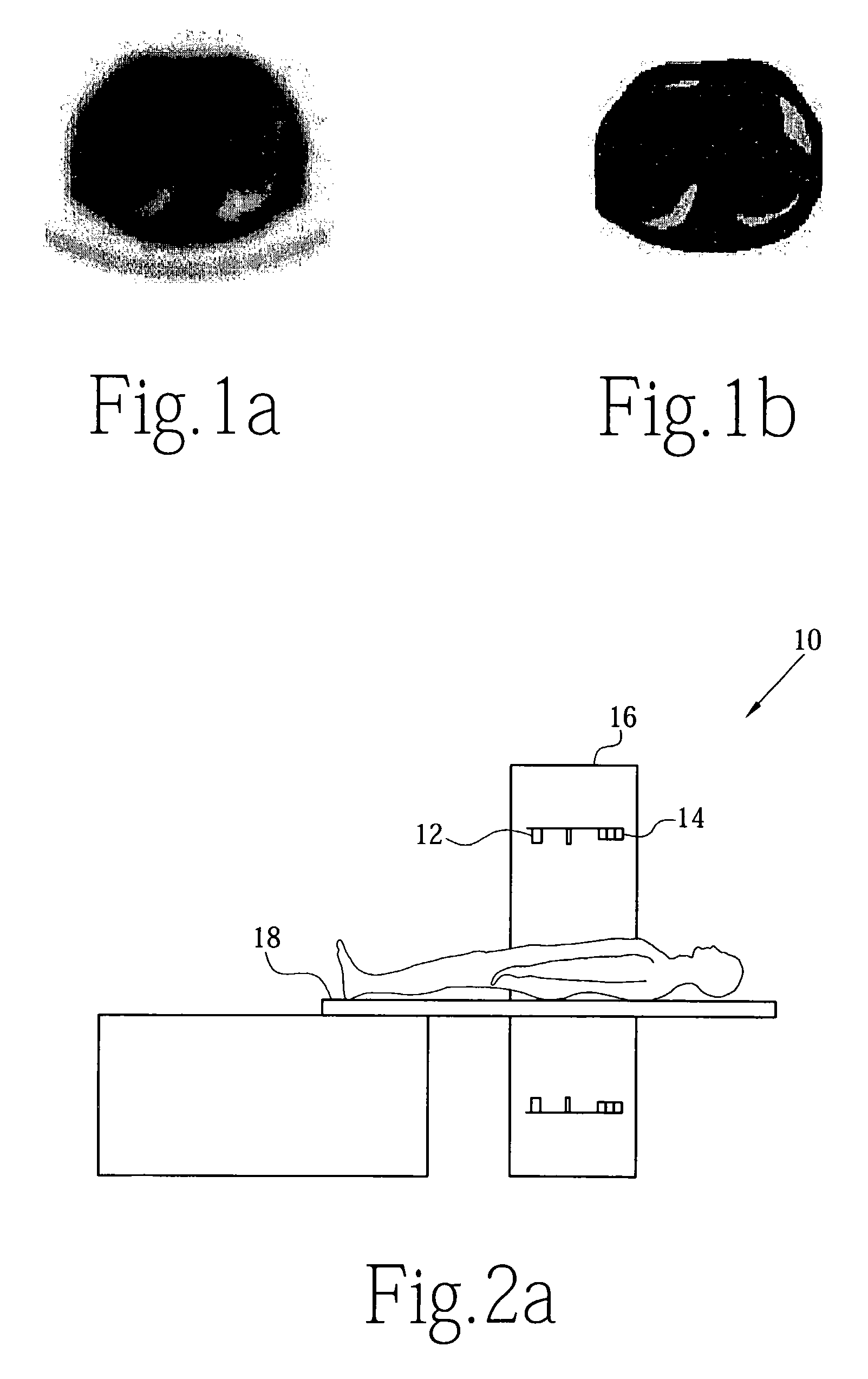Method for acquiring PET and CT images
a technology of ct and pet, applied in the field of tomograph, can solve the problems of unclear approach to small lesions, inability to study systematically extracranial applications, and difficulty in solving alignment and co-registration in other regions of the human body, so as to improve the correction of pet data and accurate scatter correction
- Summary
- Abstract
- Description
- Claims
- Application Information
AI Technical Summary
Benefits of technology
Problems solved by technology
Method used
Image
Examples
Embodiment Construction
[0069]A combined PET and X-Ray CT tomograph, constructed in accordance with the present invention, is illustrated generally as 10 in the figures. The combined PET and X-Ray CT tomograph, or PET / CT scanner 10 allows registered CT and PET images to be acquired sequentially in a single device, overcoming alignment problems due to internal organ movement, variations in scanner bed profile, and positioning of the patient for the scan. In order to achieve good signal-to-noise (SNR) for imaging any region of the body, an improvement to both the CT-based attenuation correction procedure and the uniformity of the noise structure in the PET emission scan is provided.
[0070]In the described embodiment, the PET / CT scanner 10 combines a Siemens Somatom AR.SP spiral CT scanner 12 with a rotating ECAT ART PET scanner 14. The PET / CT scanner 10 includes a PET scanner 14 and a CT scanner 12, both commercially-available, in a physically known relationship one with the other. Each of the X-ray CT scanne...
PUM
 Login to View More
Login to View More Abstract
Description
Claims
Application Information
 Login to View More
Login to View More - R&D
- Intellectual Property
- Life Sciences
- Materials
- Tech Scout
- Unparalleled Data Quality
- Higher Quality Content
- 60% Fewer Hallucinations
Browse by: Latest US Patents, China's latest patents, Technical Efficacy Thesaurus, Application Domain, Technology Topic, Popular Technical Reports.
© 2025 PatSnap. All rights reserved.Legal|Privacy policy|Modern Slavery Act Transparency Statement|Sitemap|About US| Contact US: help@patsnap.com



